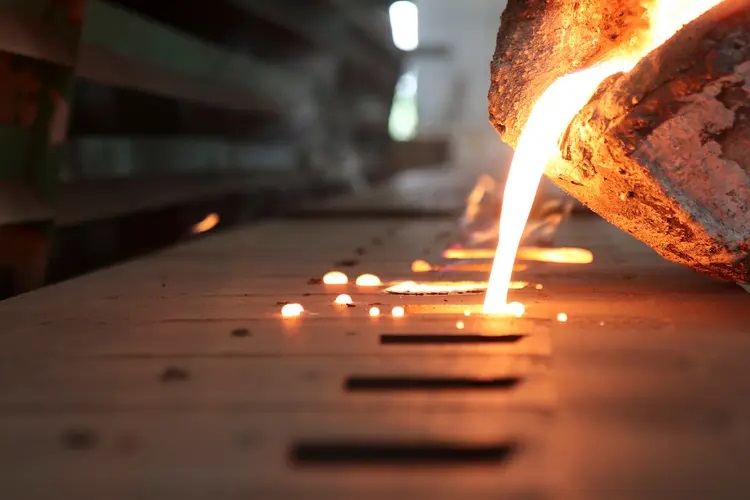In the world of foundry technology, the cope and drag method stands out as a reliable and versatile technique for metal casting. This method, utilizing two halves of a casting flask — the cope (top) and the drag (bottom) — relies heavily on the design and material of casting patterns. Patterns play a crucial role in the casting process, serving as the mold from which the final product is formed. As we delve into the nuances of pattern options for cope and drag casting, we will explore various materials like wood, plastic, and metal, discuss the importance of design complexity, examine material selection for pattern success, and look at modern innovations shaping the future of this technique.
Types of Patterns: Understanding Wooden, Plastic, and Metal Options
When selecting a pattern for cope and drag casting, the choice of material can significantly influence both the process and the outcome. The three primary materials used for patterns are wood, plastic, and metal, each offering unique benefits and challenges:
-
Wooden Patterns: Wood is the traditional choice for patterns due to its workability and cost-effectiveness. Suitable for small to medium production runs, wooden patterns are easier to modify and repair. However, they are less durable than metal or plastic, making them susceptible to wear and tear after repeated use.
-
Plastic Patterns: With advancements in synthetic materials, plastic patterns have become increasingly popular. Made typically from urethane or epoxy, plastic patterns offer high durability and excellent dimensional stability, which makes them ideal for higher volume production. They also resist moisture and corrosion, unlike wood.
-
Metal Patterns: Metal patterns are the pinnacle of durability and precision. Commonly made from aluminum or cast iron, these patterns are used for very high volume production runs or when the casting requires intricate details. Metal patterns are more expensive initially but provide longevity and consistent quality in large-scale productions.
Having explored the material options, it’s crucial to understand how the complexity of a pattern’s design impacts the casting process.
Design Complexity Matters: Tailoring Patterns for Effective Casting
The complexity of a pattern’s design is pivotal in cope and drag casting. A well-designed pattern ensures that all parts of the mold fill correctly and that the final cast is free from defects. Key considerations include:
-
Draft Angles: Patterns must include draft angles, which are slight tapers that facilitate the removal of the cast piece from the mold without damaging the mold or the casting.
-
Parting Lines: These are the lines where the cope and drag meet. Effective design ensures that parting lines are placed strategically to minimize finishing work and avoid defects in more visible areas of the cast piece.
-
Cores and Cavities: Complex internal geometries might require cores which are inserted into the mold to form hollow sections or undercuts. Designing patterns that effectively integrate cores and cavities is crucial for complex castings.
With a grasp of design intricacies, the next step is to consider how the choice of material can make or break the success of the final casting.
Material Matters: Choosing the Right Material for Pattern Success
Choosing the right material for your pattern directly impacts the efficiency and quality of the casting process in cope and drag casting. Several factors influence this decision:
-
Production Volume: Wood might suffice for low-volume runs, whereas plastic and metal are better suited for medium to high-volume production due to their durability.
-
Detail and Accuracy: If the casting requires high precision and intricate detail, metal patterns are preferred. Plastic can also be a good middle ground for moderately detailed pieces.
-
Economic Considerations: While metal patterns offer longevity, their initial cost is higher. Wood and plastic provide more cost-effective solutions for limited production runs or less complex designs.
Now that we’ve covered the importance of material selection, let’s delve into the latest innovations and trends that are reshaping pattern options in cope and drag casting.
Innovations and Trends: Modern Advances in Pattern Options for Cope and Drag Casting
The evolution of pattern-making technologies has brought about significant advancements in cope and drag casting. Current trends and innovations include:
-
3D Printing: Additive manufacturing or 3D printing is revolutionizing pattern making by allowing for the creation of complex and precise patterns quickly and at a lower cost than traditional methods.
-
Sustainable Materials: As the industry moves towards sustainability, the development of biodegradable and recycled materials for patterns is gaining traction, reducing environmental impact.
-
Simulation Software: Advanced software now enables foundries to simulate the casting process before creating a pattern, thus optimizing the design for better performance and reducing material wastage.
Having looked at the evolving landscape of pattern materials and technologies, we can now summarize the key insights and forward-looking trends in the field of cope and drag casting.
Refining the Craft: Key Takeaways and Future Directions in Cope and Drag Casting
In conclusion, the selection of the right pattern material and design in cope and drag casting is not just a matter of preference but a strategic decision that affects the entire casting process. Whether opting for wood, plastic, or metal, each material offers distinct advantages tailored to specific needs and production scales. Coupled with modern technological advances, these choices are expanding the possibilities and efficiency of the cope and drag casting method. As the industry continues to innovate, these pattern options are set to become even more adaptable, precise, and environmentally friendly.

